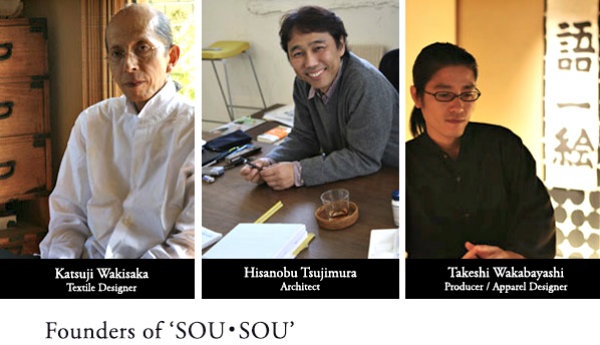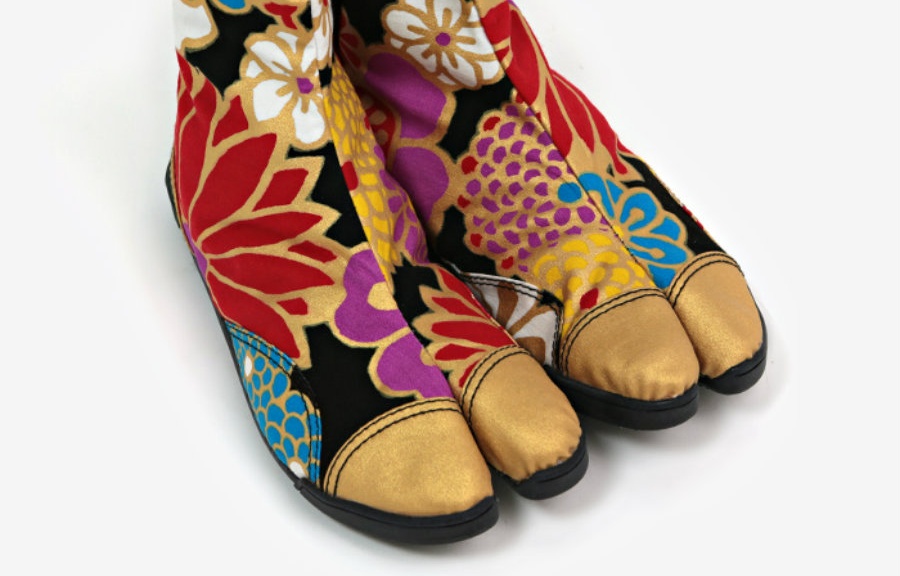Modern Designs Update Ancient Traditions
The Japanese textile brand SOU SOU, based in Kyoto, has been quietly growing and gaining support among young people. How is this Japanese-styled brand making such inroads when youth in Japan today prefer Western clothing?
By Highlighting Japan
http://www.sousouus.com/about/
Takeshi Wakabayashi, producer of SOU SOU, explains that the secret lies in the way the brand “Uses textile designs that take Japan’s traditional motifs of the four seasons and rearranges them stylishly. These are modern Japanese clothes that update traditions.”
SOU SOU’s contemporary accessories and apparel include tenugui cloths that depict seasonal motifs in vivid colors and starkly modern lines, traditional tabi shoes retooled for the street with colorful patterns, dresses with the kind of curved sleeves you would see in a kimono, and jackets with the unisex right front design just like Japanese traditional clothing.
These pieces boldly take the traditional idea of Japanese clothing and turn it on its head. The pattern and styling remain sufficiently Japanese to intrigue visitors from abroad coming to Tokyo and Kyoto, yet they are contemporary enough to appeal to Japanese shoppers. SOU SOU says items fly off the shelves at both its online shop and brick-and-mortar stores.
https://www.youtube.com/watch?v=bauqo4EiukU
Using only textiles made and dyed in Japan, SOU SOU’s goods are a careful balance of high quality and vivid, fresh designs. The lineup is presented to guests from overseas as high-quality “kimono-like” products made in Japan, while the same offerings are pitched to Japanese customers as something accessible and familiar—a way to get in touch with forgotten traditions.
The brand name comes from the Japanese phrase “sou, sou,” a form of gentle assent that Japanese people use unconsciously every day when agreeing with someone. In that same spirit, SOU SOU’s products are soft, natural and refined.
The brand uses a number of different textiles, such as Isemomen cotton from Tsu City in Mie Prefecture, Takashimachijimi (a textile made using a strong twist on the horizontal threads, with wrinkles being the central focus of the cloth) from Takashima in Shiga Prefecture, and patterned Kurumegasuri cloth (woven with either or both pre-dyed woof and warp yarns to create distinct patterns) from Fukuoka Prefecture, muslin (a thin textile made by plain weaving single strands of cotton and wool yarns) from Hamamatsu City in Shizuoka Prefecture, and many other local cloths known for their quality, but for which the knowledge to create them is fading.
These cloths are dyed with patterns designed by Katsuji Wakisaka, who worked as Finnish brand Marimekko’s first Japanese textile designer. Lively and innovative tie-dyed patterns by young designers are also popular at the store.
Producer Wakabayashi has big dreams: “Just as a London brand was responsible for the birth of punk fashion, we want to make SOU SOU a fashion style in its own right,” he says.
If SOU SOU and other brands that are fusing tradition with modern elements succeed at bringing Japanese attire and textiles to a broader audience, Japan’s once-dwindling traditional industries may be in for a powerful renaissance.





